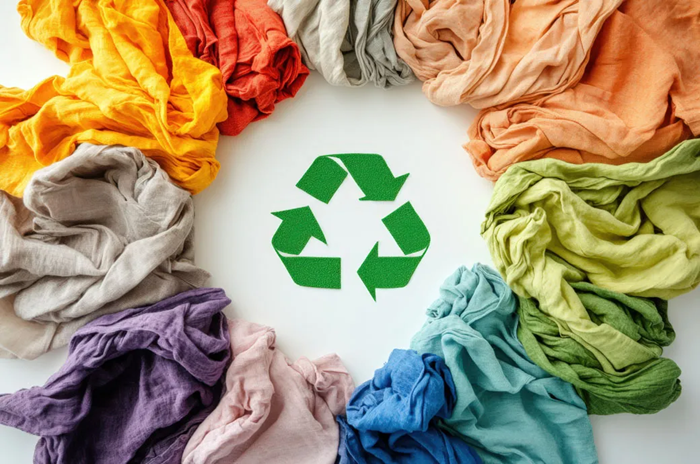FW
Coats, the world’s leading industrial thread and consumer textile crafts business, launched two innovative new products, Flamepro and Signal, at A+A, the largest international trade fair on safety, security and health, Dusseldorf, Germany, November 5 to 8, 2013. Flamepro is a range of flame, electric arc and cut resistant yarns for use in personal protective equipment, while Signal is a range of reflective tapes for high visibility applications.
The range of Flamepro yarns has been developed for fabrics used in a wide range of extreme environments including fire fighting, oil and gas, power, anti-riot and military combat. The versatile range includes a product for use in fire retardant underwear worn by firefighters and Formula 1 drivers and is available in a large range of counts and dyes.
Coats has developed a unique blend indicator which can take customer requirements such as improved bodyburn, higher ATPV (arc thermal protective value), increased comfort and lower cost, and translate them into a specific flame resistant blend without the need for a large number of expensive samples.
Signal is a range of high quality reflective tapes for workwear, protective clothing, apparel and accessories which is available globally. It is available in flame resistant and standard versions suitable for both domestic and industrial wash applications. All products meet or exceed the requirements of high visibility and heat and flame resistant norms. It is available in lime and silver and different widths.
One among the top 10 manufactures of yarn-dyed industry in China, Jiangsu Lianfa Textile has managed to achieve sustainable development by fulfilling social responsibilities earnestly. The company has always been committed to save energy, reduce emission, and constructed environment-friendly enterprise and Lianfa realized them by improving equipment, technology innovation. In order to strictly fulfil its social responsibilities and set environment-protected image, Lianfa used environment-protected dyes, recycling resource, realized the ‘ecological environment-protected’ of production and quality.
Taking a step forward it has developed a one-way dye liquor circulating dyeing process and lab recipe control system V1.0 which simplifies production operation, as well as realized a reduction of bath ratio from 1:15 to 1:4~1:7 and improved efficiency while water immersion requirement is just 20%-70% of the original system. It is a globally advanced system which wins Lianfa an advanced energy conservation and emission reduction award in the industry.
It has also developed one bath process for colour fixation and softening, and one bath process for acid pickling and enzyme wash. One bath process for colour fixation & softening: develop the softener which can be used with fixer at the same time by controlling PH index, temperature and time of feeding in raw material.
Acid pickling enzyme wash technology is a process wherein first the acid is added, and then alkali by bath temperature and pH value control, which can help saving one step water consumption. This technology saves 10 per cent water, which is about 1,65,000 tons of water per year. Lianfa also applies heat exchange system to recover heat from hot temperature waste water generated from dyeing and finishing processes, as well as reuse the steam condensate and cooling water generated from dyeing, finishing, heating and heat preservation processes to new dyeing and mercerizing/sizing processes.
As per the Hong Kong Trade Development Company (HKTDC) Turkish exhibitors are trying to capitalise on rising prices of Chinese exports. The latest figures show a decrease in Turkey’s trade with China. In 2012, Turkey imported $1.7 billion worth of clothing items from China which is $300 million less than 2011, partly because of tariffs imposed by the Turkish government.
The silk sector particularly is at stake. China dominates the international sale of silk yarn. However, up to 1991, Turkey produced 15 per cent of the world’s silk supply. When China entered the international mark in the late 1980s, it was supplying silk at an unmatchable $4.00 per kg, but these prices have risen dramatically in the following years.
Turkish manufacturers are convinced that Turkish made fabrics may win on terms of overall quality and technical superiority of dyes used. Further, Turkish companies adhere more strictly to product safety guidelines compared to many Chinese competitors. Turkish companies are more hardworking and have greater technical knowledge, much of it gained from broader experience across Europe than their Chinese counterparts.
A local business analyst underlines that despite import taxes, it is still relatively easy, in financial terms, for Chinese companies to trade with Turkey. Domestic Turkish companies, however are looking for quality apart from the lowest price.
According to Turkey Union of Chamber of Agriculture (TZOB) chairman, Shams Bayraktar, “Cotton imports has been continuously rising, owing to the absence of any measures against the import of cotton in the country.”
A statement issued by TZOB, the said the country imported 613,000 tons of cotton in 2012, which is a 442.5 per cent more compared to the 113,000 tons of cotton imported in 1995. Bayraktar said the cotton sector is one of the most strategic sectors in the country, as it facilitates the textile and apparel sector of Turkey. However, the positive and negative development in cotton sector is highly influenced by industry and trade policies as well as world markets.
The TZOB official said cotton production in the country has also been declining consistently, in 2012, cotton produced in the country was 2.32 million tons, this is expected to decline in 2013 by 2 to 1.7 per cent year-on-year. The TZOB official urged that it was necessary to take measures for supporting Turkish cotton growers for them to compete with international markets.
Innovation was an important part of Intertextile Shanghai Apparel Fabrics and Verve for Design proved this fact while showcasing original designs from Australia, France, Italy, Japan, Korea, Taiwan and UK. The zone offered opportunities for new designers to display their work which was a crucial element of Verve for Design, which was firmly embraced by Australia’s Longina Philips Designs. “We have introduced a new constantly evolving collection called ‘The Print Room’, which was created as a platform to facilitate design by young emerging designers and offered us a distinct edge in terms of the design work we can offer to our clients,” said Senior Designer Shannon Cheung.
Handmade designs was one of the main attractions for Chinese consumers particularly in the mid range market. Italy’s Lineastudio di Sartori Stuart & C SAS is on point with this trend, bringing both handmade and digital designs in a bid to meet the major textile players in the Asian market, said Stuart Sartori, President.
This zone was truly about expressing creativity and showcasing originality. As Dietmar Voegel, owner of UK-based Circleline Designs pointed out, “We work with people who are interested in original design and artwork and want to distinguish themselves from the mass market.”












